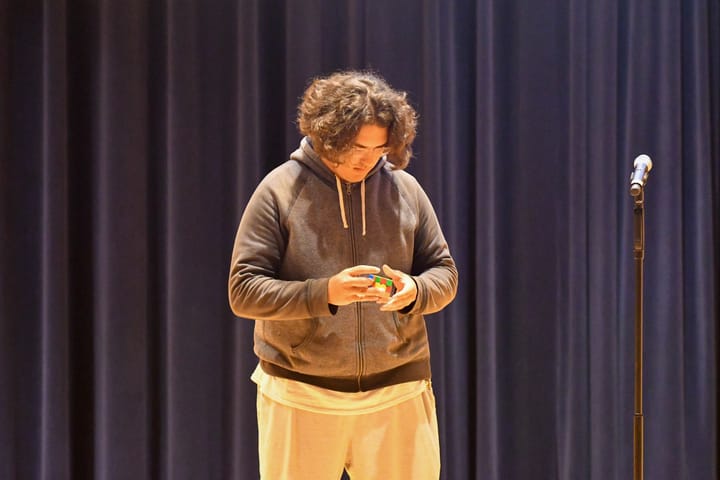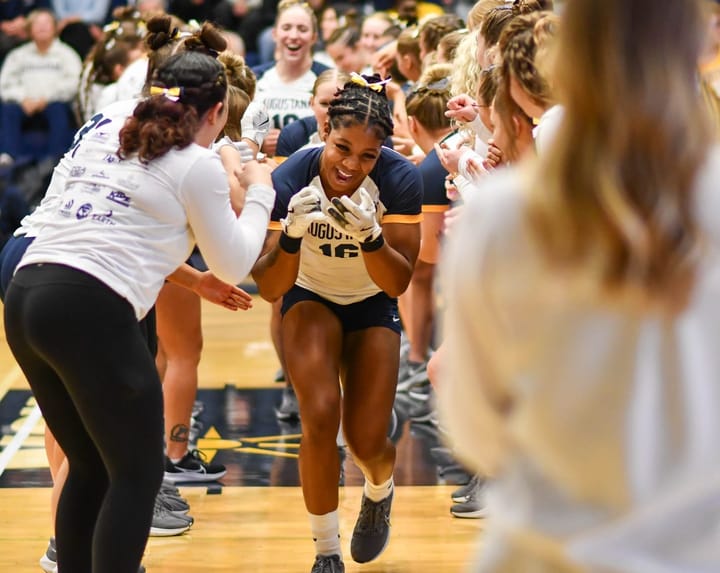Work-study students responsible for COVID-19 screening
COVID-19 brought changes in the athletic training program for many Augustana work-study students. Since fall season sports were canceled, students working for athletics were given a new job to be able to continue their work study.
Before any student athlete can go to practice or use equipment at the Elmen Center, a work study student has to screen them for COVID-19.
“We ask them for their last name and first name,” sophomore Evelyn Prewett said. “We ask them where they’re going—the weight room or the gym. We ask them what sport they are in and ask them a series of symptom questions.”
Sophomore Bailey McCullough is on the women’s soccer team. She frequently visits the Elmen Center and gets screened when she has practice or comes for any other reason.
“I haven’t gone into the Elmen Center without getting screened, even if I’m just going to talk with my coach for a little bit,” she said.
If the student has a temperature above 100.4 degrees or has any symptoms, then the athlete is not allowed to go to practice or use the Elmen Center facilities.
“We have a sheet at the table that has all the athletic trainers for each sport, and then we either call their number or we go grab someone,” junior Samantha Salker said.
Next, the athletic trainers would meet with the student to handle the situation.
Students had minimal training for their new position in the athletic training office. Prewett and Salker averaged a 20-minute conversation with an athletic trainer on what the protocol would be if someone were to test positive, how to properly screen the athletes and how to log the athletes in on a Google document.
In order for the athletes to be screened, they have to enter through the door on the east side of the building, closest to the parking lot.
“If someone doesn’t come in with a mask, then we have masks at the table that they’re supposed to have or else they can’t go anywhere,” Salker said.
Before COVID-19, many of the students in the athletic training program had very different jobs. Prewett mentioned that she used to come in early to the training room to get ready for the day. Her job consisted of making sure “all the supplies are stocked, all the towels washed and [wiped] off counters.”
Salker’s job took place at sports home games.
“I was taking stats at home events,” Salker said. “But since we don’t have any athletics until the first of the year, they were polling anyone they could.”
Since Salker wouldn’t have a job otherwise, she was asked if she could be the one to help screen athletes.
Even though the students come into contact with a lot of athletes during the day, Salker said that it isn’t bad. She mentioned that 2:30 p.m. to 3:20 p.m. is the busiest because that’s when a lot of teams practice.
“From 4 p.m. to 5 p.m., maybe I see five people each time,” Salker said. “At that time, athletes are usually in class, or they have already started practice.



